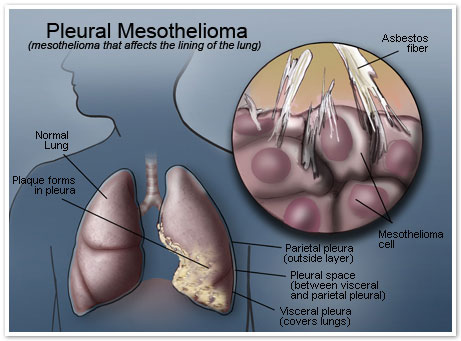
-->
Pleural mesothelioma is a rare cancer often diagnosed in people who have been exposed to high levels of asbestos. The malignancy affects the pleura, a thin membrane of lubricating cells that lines the lungs and chest wall. It sometimes takes 10 years or more for changes to appear that are indicative of pleural disease, and even long for symptoms to manifest. These differences can include a thickening or calcification of the pleural lining, a condition commonly diagnosed as pleural plaques. Conditions like pleural calcification or the development of pleural plaques often serve as pre-cursor to mesothelioma.
Pleural MesotheliomaGet This Image For Your Site
In most instances, pleural disease is not considered fatal but it can cause diminished lung function and may confirm that a person has sustained significant asbestos exposure. Those diagnosed with pleural conditions are generally considered to be at a higher risk for developing the more severe pleural mesothelioma.
Pleural mesothelioma originates in the pleura but can quickly spread to the outer chest wall, abdomen, and heart. Pleural mesothelioma is typically fatal within 1 year of diagnosis. However, understanding and recognizing key risk factors, like asbestos exposure, will typically lead to early detection of the cancer. Those who are fortunate to receive an early diagnosis are likely to be more eligible for life-sustaining treatments such as surgical resection of the cancer. This type of treatment can extend a patient’s life years beyond that of a typical mesothelioma patient.
While there is no cure for pleural mesothelioma, treatment options do exist for the cancer. There are ways for patients to manage the disease through tumor management including traditional radiation and chemotherapy methods, which can ease symptoms of the disease and make a patient more comfortable. In patients where a diagnosis is made of early stage disease, mesothelioma surgery can extend the survival rate far beyond previous levels in untreated disease.

0 commentaires:
Enregistrer un commentaire